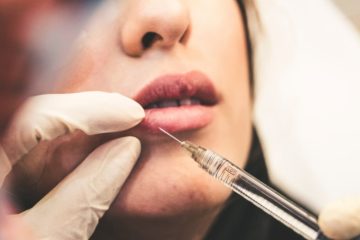
Whether you’re just seeing the first signs of fine lines or you’ve been frustrated by sagging skin for years, there’s a good chance you have wondered about the differences between facelifts and injectables. You may have heard recommendations or generalizations: but how do you determine which option is right for you? Here are four differences between facelifts and injectables that can help you decide.
Facelifts Have a Longer Recovery Time—But Also Last Longer
Unlike injectables, which are minimally invasive, a facelift is a surgical procedure that will take time to recover from. In addition to having sutures that will need to be removed 1–3 weeks after surgery, you will also experience swelling, and it takes time for your body to fully heal. The primary recovery time for a facelift is generally 4–6 weeks, and it can take up to six months for all healing and swelling to get back to normal.
At the same time, facelifts offer a more permanent change, so while it takes longer for you to recover and see the full results, you can be confident that those results will last a long time.
Injectables Can be Targeted to Particular Areas
Injectables generally affect the precise area where they are applied, making them great for targeting early signs of wrinkles, sagging skin, and collagen loss. They can also be great for targeting specific areas. For example, if you are frustrated by “frown lines” between your eyebrows, but you’re happy with “smile lines” around your eyes or lips, it is easy to apply a treatment like Botox to just one spot.
Facelifts Can Make Bigger Changes
Because facelifts are surgical, they allow you to make bigger changes. In particular if you want to address multiple areas, such as wrinkles, sagging skin, and excess neck fat, a facelift might be the best choice for you.
Different Injectables Have Different Uses (And Can Be Combined)
There are many different choices for minimally-invasive injectables, and each product works differently. You may choose between a few different dermal fillers by speaking to your doctor. In addition, you might combine a wrinkle reducer like Botox with a fat reducer like Kybella or a dermal filler like Juvederm. Depending on your needs, your doctor might recommend spreading out applications of different products over time. This also allows you to start small, see those changes, and then make additional changes over time.
Want to learn more about injectables and facelifts? You can request a consult with us to learn more!

0 Comments